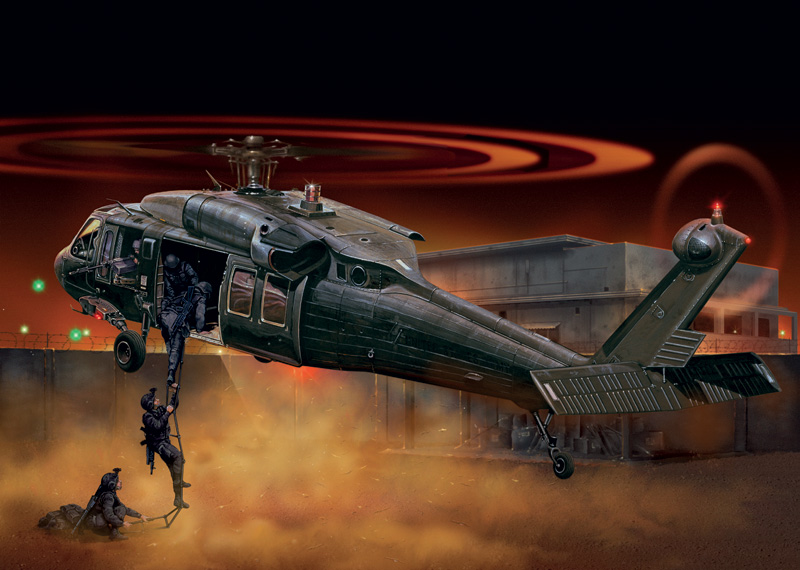Upkeep and Upkeep of the UH 60 Black Hawk Helicopter
Upkeep and Upkeep of the UH 60 Black Hawk Helicopter
Blog Article
Understanding the Function and Importance of Different UH60 Parts in Aviation Workflow
In the elaborate globe of aviation procedures, every component of a UH60 helicopter plays an essential duty in making certain reliable and safe trips. As we explore the value of the blades system, engines, avionics, transmission system, and touchdown equipment in UH60 operations, a deeper admiration for the harmony of these elements emerges, losing light on the complexities that underpin the aeronautics industry's commitment to precision and reliability.
Rotor System
The rotor system, a critical component in helicopter design, plays a critical duty in providing lift and directional control throughout trip. Being composed of the major blades and tail rotor, this system is responsible for generating the essential aerodynamic forces to maintain the helicopter airborne and maneuverable.
In comparison, the tail blades, positioned at the tail end of the helicopter, combats the torque generated by the primary rotor's turning, making certain the helicopter stays well balanced and can make controlled turns. With each other, these blades components develop a sophisticated system that makes it possible for helicopters to execute a wide variety of flight maneuvers successfully and securely.

Engines
In aviation procedures, the correct functioning of engines is critical to complementing the rotor system's wind resistant capacities in helicopters. The UH60 helicopter is outfitted with two General Electric T700-GE-701D engines, each providing 1,890 shaft horsepower. These turboshaft engines are vital parts that power the main rotor transmission, tail blades system, and various other important helicopter systems. The engines play a crucial duty in producing the needed power to lift the aircraft, control its trip, and make sure a safe operation.
In instance of engine malfunctions or emergencies, pilots depend on their training and the helicopter's design attributes to carry out essential treatments quickly and securely. On the whole, the engines in UH60 helicopters are necessary components that contribute considerably to the airplane's operational success and goal efficiency.
Avionics
Avionics innovation plays a pivotal role in modern-day aviation procedures, integrating digital systems for navigating, interaction, and aircraft monitoring. In the UH60 helicopter, avionics include a vast array of systems that make sure risk-free and efficient flight. uh 60. These systems include communication equipment, such as transponders and radios, which allow pilots to interact with air traffic control service and other aircraft. Navigating systems, like GPS and inertial navigating systems, offer precise placing info to the team, assisting in route planning and making sure exact navigating throughout flights. Additionally, avionics consist of trip administration systems that aid automate various jobs, such as auto-pilot functions and trip information recording.
Furthermore, avionics play an important function in enhancing situational understanding for pilots, permitting them to check crucial trip specifications, weather, and potential hazards in real-time. By offering crucial information and automation abilities, avionics add substantially to the safety and security, performance, and overall efficiency of UH60 helicopters in diverse aviation procedures.
Transmission System
An essential element of the UH60 helicopter's performance and efficiency is its get redirected here transmission system. The transmission system in a UH60 helicopter is accountable for moving power from the engines to the major rotor and tail rotor systems. This essential element makes certain that the helicopter can steer effectively and maintain security during trip procedures.
The transmission system in the UH60 helicopter consists of various parts, consisting of the major gearbox, intermediate transmission, tail gearbox, and drive shafts. Each of these elements plays a critical role in guaranteeing that power is dispersed successfully throughout the airplane.
The main transmission is especially vital as it transfers power from the engines to the major rotor system, allowing the helicopter to take off the ground and attain onward, backward, and lateral activity. The tail gearbox, on the other hand, transfers power to the tail rotor, which helps combat the primary rotor's torque and offers directional control.
Touchdown Gear


The landing equipment of the UH60 helicopter acts as an essential part for making certain secure and risk-free ground operations, complementing the functionality of its transmission system. Consisting of wheels, shock absorbers, and assistance frameworks, the touchdown gear sustains the helicopter's weight throughout takeoff, touchdown, and while on the ground. The layout of the touchdown gear is essential for distributing the aircraft's weight uniformly to stop tipping or structural damages. Additionally, the touchdown equipment plays a crucial duty in taking in the impact of landings, decreasing the tension on the airframe and making sure a smooth touchdown. Proper maintenance of the touchdown equipment is important to ensure ideal performance and security during operations. Normal evaluations, lubrication, and substitute of worn-out components are essential to maintain the integrity and performance of the landing gear system. Pilots and landing crew need to follow appropriate treatments to ensure the stability of the touchdown gear and boost total flight safety and see security.
Final Thought
To conclude, the various components of the UH60 helicopter play important functions in making certain the smooth procedure of air travel tasks. uh 60. The rotor system, engines, avionics, transmission system, and touchdown equipment all job together to make sure the security and efficiency of the aircraft. Comprehending the importance of each element is important for pilots, engineers, and upkeep team to make sure the general performance of the UH60 helicopter throughout flight procedures

Report this page